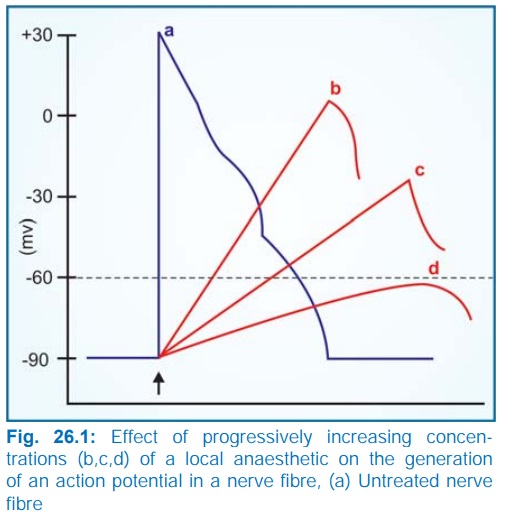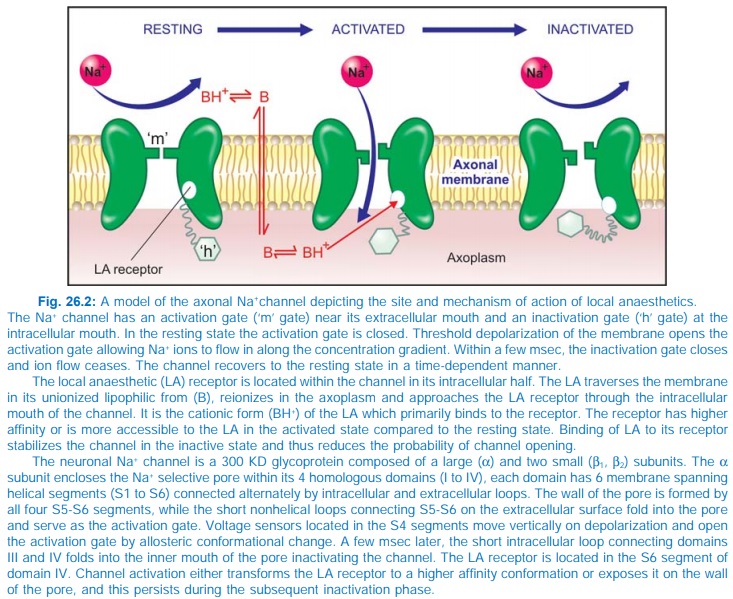Mechanism of Action of Local Anaesthetics
| Home | | Pharmacology |Chapter: Essential pharmacology : Local Anaesthetics
The LAs block nerve conduction by decreasing the entry of Na+ ions during upstroke of action potential (AP). As the concentration of the LA is increased, the rate of rise of AP and maximum depolarization decreases causing slowing of conduction. Finally, local depolarization fails to reach the threshold potential and conduction block ensues.
MECHANISM OF ACTION
The LAs block nerve conduction by decreasing the entry of Na+ ions during upstroke of action potential (AP). As the concentration of the LA is increased, the rate of rise of AP and maximum depolarization decreases (Fig. 26.1) causing slowing of conduction. Finally, local depolarization fails to reach the threshold potential and conduction block ensues.

The LAs interact with a receptor situated within the voltage sensitive Na+ channel and raise the threshold of channel opening: Na+ permeability fails to increase in response to an impulse or stimulus. Impulse conduction is interrupted when the Na+ channels over a critical length of the fibre (2–3 nodes of Ranvier in case of myelinated fibres) are blocked. The details are explained in Fig. 26.2. At physiological pH, the LA molecule is partly ionized. The equilibrium between the unionized base form (B) and the ionized cationic form (BH+) depends on the pKa of the LA.

The predominant active species (cationic form of LA) is able to approach its receptor only when the channel is open at the inner face and it binds more avidly to the inactive state of the channel, prolonging the inactive state. The channel takes longer to recover → refractory period of the fibre is increased. A resting nerve is rather resistant to blockade, and blockade develops rapidly when the nerve is stimulated repeatedly. Degree of blockade is frequency dependent: greater blockade at higher frequency of stimulation. Moreover, exposure to higher concentration of Ca2+ reduces inactivation of Na+ channels and lessens the degree of block. Blockade of conduction by LA is not due to hyperpolarization; in fact, resting membrane potential is unaltered because K+ channels are blocked only at higher concentrations of LA.
The onset time of blockade is related primarily to the pKa of the LA. Those with lower pKa (7.6–7.8), e.g. lidocaine, mepivacaine are fast acting, because 30–40% LA is in the undissociated base form at pH 7.4 and it is this form which penetrates the axon. Procaine, tetracaine, bupivacaine have higher pKa (8.1–8.9), only 15% or less is unionized at pH 7.4; these are slow acting. Chloroprocaine is an exception, having rapid onset despite high pKa (9.1).
Related Topics
